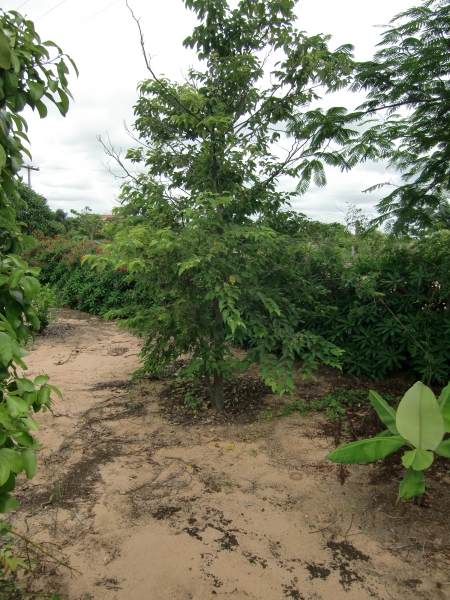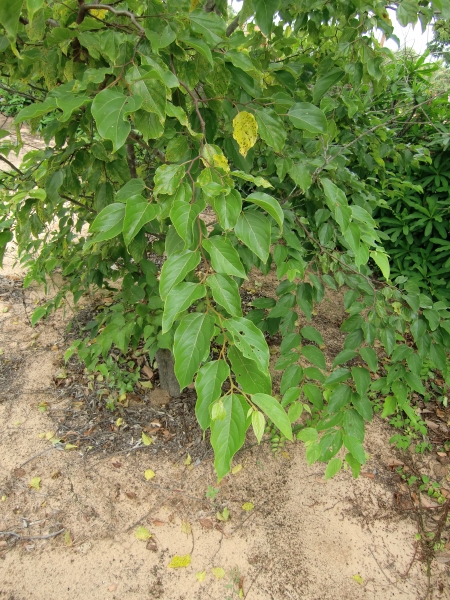

Hovenia dulcis (Japanese Raisin Tree)
Approx. 33 feet tall Tree from Japan from the genus Hovenia and from the family Rhamnaceae, one of the few species in our yard in Lucianópolis, which are truly hardy and outplantable in Germany and Europe. The smooth bark of the branches is blackish-violet. The petioles are 0.8 to 1.8 inches long. The alternating arranged, simple, large, glossy leaves are hastate and are approx. 3.8 to 7.8 inches long and 3.6 to 4.8 inches long. The leaf margin is sawed. The inflorescences are terminal, the blossoms are small and creme-colored, yellowishgreen to lightgreen, fragant and five-counted, measure 6 to 8 mm in the diameter. The sepals are 2.2 to 2.5 mm long and 1.6 to 2.1 mm wide. The discus is light haired, it is only one circle with 5 stames existing. The ovary is half-hypnognous.
The real fruit is one ribed hemispheric stone fruit, measures 6.5 to 7.5 mm of diameter, is inedible and contains 3 seeds. But the fruit stalk is swollen and one pseudofruit is forming. The dark seeds have one diameter from 5 to 5.5 mm.
The raisin tree is seldom grown in gardens and parks as ornamental tree. The fine and hard wood is used for production of furniture. The wood is also known as Japanese Mahogany. The sweet, fragant fruit stalks can be eaten in-natura or cooked. They are dried similar in the taste and shape to raisins. From them one sweetener. Also the wood of the tree is inserted to alcohol or cooked-up to tea and is used as medicine for the example in Corea.
Our specimen we overtaken by the purchase of our yard, only Helton and his wife Emilene have recognized it.

Hovenia dulcis in our garden in December 2009.

Close-up view of the branches of Hovenia dulcis in Dezember 2009.
Back to the Agricultural Plant List
Updated by Joachim Jaeck on March 10th, 2010